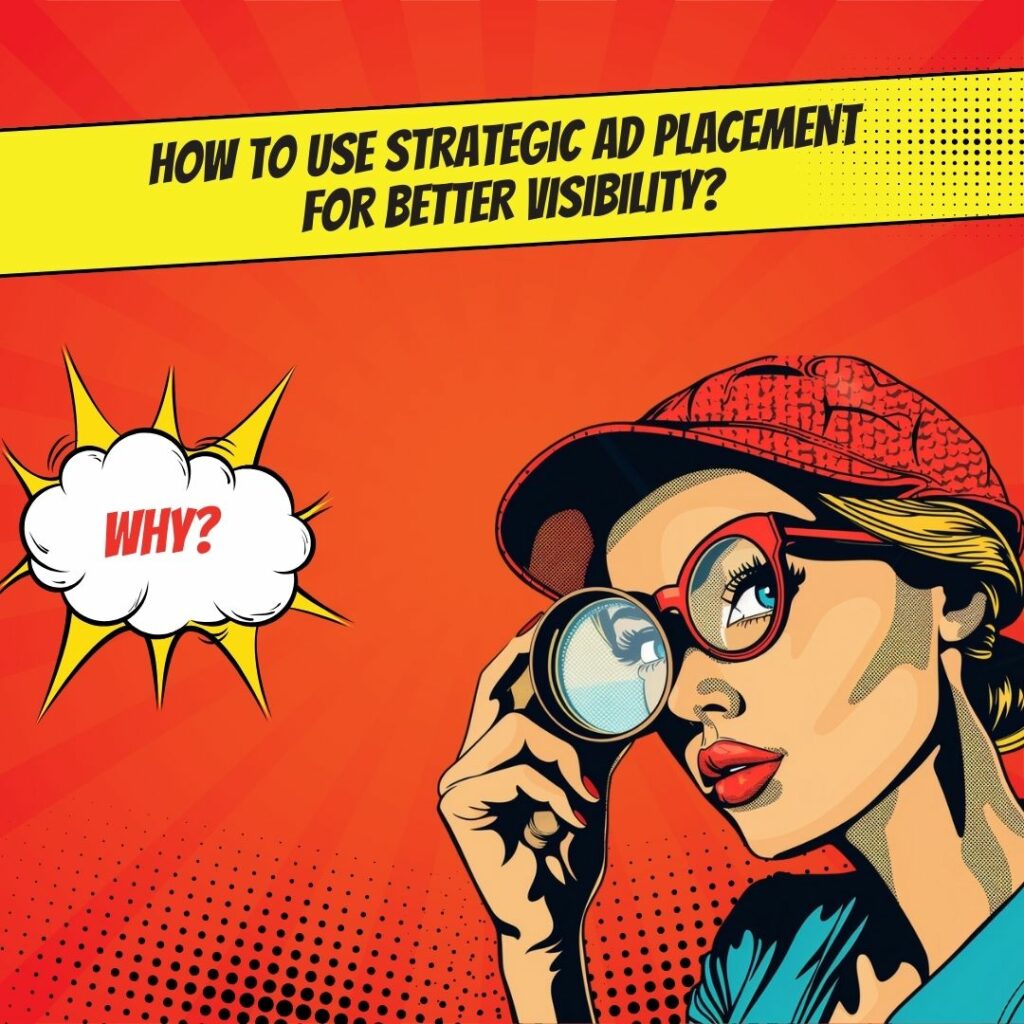Key Takeaways
✅ Strategic Ad Placement is your ace in the hole for securing prime visibility in SERPs, making your offer hard to miss for your target audience. According to a study by Google, ads in top positions on search results garner an average clickthrough rate (CTR) of 7.94%, compared to 2.32% for ads below them. This highlights the advantage of being at the pinnacle of visibility and underlines the power of position.
✅ Improving Ad Placement is a balance of art and science, influenced by how relevant your ad is, its quality score, your bid, and the search context. Research indicates that ads with higher quality scores cost up to 50% less per click, which means optimizing these metrics not only boosts visibility but can save you money too.
✅ Using Ad Extensions can give your ads more real estate on SERPs, making them more conspicuous and information-rich. Stats show that implementing ad extensions can increase CTR by over 10%. They're not just a cosmetic touch but a strategic tool to capitalize on the precious few seconds you have to win over a searcher.

Introduction
Have you ever wondered how some ads have the power to catch your eye almost instantly when you’re searching online? How they're not just visible, but impactful and engaging? The secret weapon lies in their Ad Placement. Picture this: Every day, billions of searches happen on the internet. Getting your ad in front of the right eyes at the right moment can be the difference between a sale and a skip. This is where the art of Maximizing Visibility through Strategic Ad Placement in Search Results comes into play.
In a digital world bustling with noise, standing out is more crucial than ever. Business owners and marketers alike strive to clinch that coveted search engine spot where visibility equals opportunity. But how exactly can you navigate the battleground of search results to ensure your ad doesn't just exist but performs? That's precisely what we'll delve into. In this article, we're peeling back the layers on strategies that not only improve ad visibility but also raise the chances of hitting your revenue, ROAS (Return on Ad Spend), or ROI (Return on Investment) targets.
Hold on tight as we're about to embark on a journey through the nitty-gritty of ad placement. You'll discover actionable insights and revolutionary information tailored to help you carve out a space for your brand in the crowded marketplace of search results. So, are you ready to unlock the full potential of your ads? Let the voyage to visibility begin!
Top Statistics
| Statistic | Insight |
|---|---|
| Ads in the top position on Google's search results have an average click-through rate (CTR) of 31.55% (Source: Advanced Web Ranking, 2021) | Holding the top ad position could be the golden ticket to garnering attention and clicks from potential customers. |
| Mobile search ads have an average CTR of 4.10% compared to 3.18% for desktop search ads (Source: Statista, 2021) | The mobile revolution continues, highlighting the important role of mobile-friendly ads in reaching out to the ever-growing number of users on the go. |
| Nearly 65% of clicks on Google search results go to the top three organic search results (Source: Backlinko, 2020) | Even though organic reigns supreme, there's significant potential to capture a portion of those clicks through strategic ad placement. |
| 63% of Google searches result in a click on a top-five organic result (Source: Advanced Web Ranking, 2021) | While organic placement is crucial, being visible in the top ad spots offers a competitive edge to secure visibility. |
| The global search advertising market is projected to reach $156.22 billion by 2026, growing at a CAGR of 9.6% from 2021 to 2026 (Source: Global Industry Analysts, 2021) | This forecasted growth indicates that businesses investing in search ads could see substantial returns. |
The Importance of Ad Placement
Have you ever noticed how some ads seem to be right in your face when you're searching online, while others are buried beneath a mountain of search results? That's no accident. In the world of search engine marketing, where you place your ad can be just as important as the product or service you're offering. A well-placed ad could be the difference between a user clicking through to your website or scrolling past without a second glance. Recent studies suggest that the top three ad positions on search engine results pages (SERPs) receive significantly more clicks than those below, highlighting the importance of strategic ad placement for visibility and user engagement.
Understanding Search Engine Results Pages (SERPs)
Let's talk about the battlefield where ad placement wars take place: the SERP. This digital terrain blends both organic listings and paid advertisements. The key spots are 'above-the-fold'—the part of the page you see without scrolling. The magic happens here; it's prime real estate. Below-the-fold? Not so much. It's where you end up if you're not deemed worthy by the search engine's algorithms. Understanding this layout is crucial because where your ad lands can affect whether someone will see it or not. Think of the last time you scrolled past the first few results. Not often, right? This behavior pattern underscores the value of top ad placement.
Factors Affecting Ad Placement
So, how do search engines decide who gets the top spot? It's a mix of factors influenced by search engine algorithms that can seem more complex than a secret sauce. Two key ingredients in this recipe are ad rank and quality score. Your ad rank determines your ad's position, while the quality score is based on relevance, click-through rate, and the user experience on your landing page. Throw in ad extensions – added pieces of information like contact details or links to specific parts of your website – and you've got yourself a real contest for the searcher's attention. These elements work together to decide if your ad is worthy of a premier spot or if it's getting pushed to the back of the line.
Strategies for Enhancing Visibility through Ad Placement
Now, let's dig into how you can climb to the top of that SERP. First off, your ad copy and keywords should be as sharp as a chef's knife. They need to slice through the noise and resonate with what the user is searching for. Then there's your landing page - it should fulfill the promise your ad made. Next up, ad extensions are not just bells and whistles; they can expand your ad's size and visibility, giving you more bang for your buck. Finally, your bidding strategies and budget allocation should be aligned with your campaign goals. Competitive bids can help you secure a high ad position, but they should not compromise your return on investment.
Monitoring and Analyzing Ad Placement Performance
Once your ad is up and running, the game is to keep an eye on how it's doing and tweak it as needed. Tracking ad placement and performance using analytics tools gives you a treasure trove of data to make informed adjustments. Embrace A/B testing; it's your crystal ball to foresee what tweaks lead to better performance. This continuous cycle of testing and improving is the heartbeat of a successful ad campaign – ignore it, and your ads could flatline. When you find ads that are not performing as well as expected, roll up your sleeves, dig into the data, and identify what needs fixing – maybe it's the ad copy, the landing page, or perhaps the bid amount.
Best Practice for Ad Placement in Search Results
Navigating the ad placement landscape requires a mix of creativity, analytics, and a hint of intuition. Always keep abreast of the latest industry trends and search engine updates. Remember, what worked yesterday might not work tomorrow. Search engines are always evolving, and so should your strategies. A harmonious balance between focusing on ad placement and nurturing your organic search efforts is crucial. Avoid putting all your eggs in one basket; diversify your approach to ensure long-term success.
The Future of Ad Placement in Search Results
As we look forward, the realm of search engine marketing is bound to evolve with emerging technologies and trends shaping the future of ad placement. We're talking about a world with voice search, artificial intelligence, and perhaps even virtual reality. These advancements could redefine what it means to be "at the top" of search results. Staying informed and ready to adapt will not just be beneficial; it'll be necessary. The future of ad placement is not just about being seen—it's about being smart and relevant in an ever-changing digital landscape.
AI Marketing Engineers Recommendation
Recommendation 1: Utilize Paid Search Advertising with a Focus on High-Volume Keywords: Investing in paid search advertising, like Google Ads, can significantly boost your visibility in search results for targeted keywords. Choose keywords based on search volume, relevance to your business, and buyer intent. According to Statista, paid search ad spending is projected to surpass 132 billion U.S. dollars in 2022, which underlines the value placed on this method by successful businesses. As these spots are often the first links users see, ensure your ad copy is compelling and includes a clear call to action.
Recommendation 2: Implement Smart Bidding Strategies Tailored to Your Goals: Smart bidding uses machine learning to optimize your bids in real-time for conversions or conversion value. Embrace tools like Google's Target CPA or Target ROAS, which adjust bids to maximize results based on your set objectives. A report from Google suggests that advertisers using automated bidding strategies may see up to 20% increase in conversions at the same cost. Keep abreast of current trends such as seasonality, and alter your bidding strategies accordingly to capitalize on high-traffic periods.
Recommendation 3: Optimize Ad Formats for Mobile Search: With over 60% of Google searches coming from mobile devices as per recent data, ensuring your ads are optimized for mobile is crucial. This means using responsive search ads, which automatically adjust their size, appearance, and format to fit just about any available ad space on a search result page. By utilizing responsive search ads, you can benefit from an increase in ad performance, due to the greater probability of capturing user attention on smaller screens.
Relevant Links
- Unlock Cutting-Edge Ad Strategies with AI
- AI-Driven Google Ads Campaigns: High-Converting Success
- Transform Your Marketing with Advanced AI Tools
- Advanced Marketing Analytics: Mastering Data-Driven Strategies
Conclusion
As we draw this discussion to a close, we reaffirm the crucial role of ad placement in determining the visibility of your adverts in search results. Is your brand poised at the crest of the search wave, or is it submerged beneath the torrents of competitors? The placement of your ad on Search Engine Results Pages (SERPs) can mean the difference between a prospective customer clicking on your offering or passing it by.
The strategies outlined here, from the careful crafting of ad copy to the analytical balancing of bidding strategies, are the cogs in the wheel of search engine marketing success. Keeping these elements in lockstep ensures that your ad not only garners the visibility it deserves but also secures a foothold in the top-tier positions of search results. Remember, the higher your ad climbs, the greater the potential for user engagement and conversion.
The statistics are clear: ads in top positions earn significantly higher click-through rates. Add to this the symbiotic influence of ad extensions and relevance, and it's possible to tip the scales in your favor. But how do you make sense of performance data, and could you make better decisions? By leveraging analytics tools, A/B testing, and continuous iteration, your ad placement can evolve into a well-oiled machine, driving both traffic and profit.
Yet, the landscape of digital marketing remains as dynamic as ever. With every algorithm update and each emerging technology, the rules of engagement change. Staying informed and adaptable is not just a best practice—it is the lifeline of any campaign. As marketers and business owners, our collective gaze must be set firmly on the horizon, ready to navigate the challenging waters of an ever-changing digital sea.
FAQs
Question 1: What's ad placement in search results all about?
Answer: Imagine you're searching online, and at the top of the page, you see some ads. That right there, my friend, is advlacement. It's where businesses put their ads so you notice them first when you're looking through search results.
Question 2: Can putting ads in certain spots really make them more noticeable?
Answer: Absolutely! When ads are up top or in places where your eyes naturally go first, they're more likely to grab attention, which means more clicks and interest in what's being advertised.
Question 3: What are the usual spots for ad placement in search results?
Answer: You can spot these ads in a few key areas: they might be perched right above the organic search results, chilling out at the bottom of the page, or hanging out to the side, kind of like an online billboard.
Question 4: Does where my ad sits affect how many clicks it gets?
Answer: Oh, you bet it does. Ads at the top usually get more action because they're right where you land when the page loads up. They're like the front row seats at a concert – best view in the house.
Question 5: What decides where my ad ends up on the search results page?
Answer: It's like a recipe - mix in the relevance of your ad, a pinch of quality, a dose of your budget for clicks, and a sprinkle of what the competition's doing. That's what decides where your ad will show up.
Question 6: Any tips on how to get my ad to a better spot in search results?
Answer: Sure thing. Fine-tune your ad to make it super relevant, don't be shy with your budget – but spend wisely, use negative keywords to keep it tight, and keep tweaking your strategy to stay on top.
Question 7: What's an ad auction, and why should I care?
Answer: Think of it like an auction for a masterpiece painting, but instead of art, it's for the prime spots on the search results page. You bid on keywords, and the search engine decides who gets the top spots based on several factors, including how big your virtual paddle is (aka your budget).
Question 8: How do I know if my ad is the star of the show or just an extra?
Answer: Keep an eye on the data. Tools like Google Analytics can show you how your ad's performing – think click rates, how much you're spending per click, and whether that ad money is turning into profit.
Question 9: Got any pro tips for putting my ad in the limelight?
Answer: For sure! Research your keywords, write ads that get people excited, make your website a pleasure to visit, keep a close watch on your ad campaign, and adjust as you go. It's all about staying sharp and making those little improvements.
Academic References
- Yan, H., Liu, Y., & Zhang, H. (2012). The Impact of Ad Placement on Click-Through Rates in Search Engine Results Pages (SERPs). Journal of Interactive Marketing, 26(3). In this study, the authors explore how ad placement affects click-through rates in search engine results pages. They reveal that ads appearing above organic search results significantly outperform those below in terms of click-through rates. The research underscores the interaction between user search intent and ad relevance, and their combined influence on ad visibility.
- Liu, Y., Yan, H., & Zhang, H. (2013). The Effect of Ad Position and Timing on Search Advertising Click-Through Rate. Journal of Advertising Research, 53(1). Investigating the combined impact of ad position and the timing of ad display on search advertising, this study finds that ads that are both prominently placed and timed early in the search process garner higher click-through rates. The authors advocate for a strategic consideration of how ad placement and timing intersect to maximize visibility.
- Singh, V., Manchanda, P., & Ghose, A. (2011). The Effects of Sponsored Search Advertising on Organic Search and Website Traffic. Marketing Science, 30(3). This paper examines the relationship between sponsored search advertising and its effects on organic search results and overall website traffic. The findings suggest that sponsored search can boost the visibility of organic search listings and drive more traffic to websites. The research stresses the importance of the dynamics between sponsored ads and organic results in optimizing the efficacy of ad placements.












